NEW HAVEN — Tweed New Haven Regional Airport took a moment to celebrate its own growth and its contributions to the Connecticut economy Tuesday, announcing that it has served more than 4 million total passengers since 2020, when American Airlines ceased its American Eagle service and left Tweed with no commercial service for several months during the pandemic.
Tweed has bounced back in a big way since then, with budget airline Avelo Airlines beginning service on Nov. 3, 2021 and Breeze Airways, also a budget airline, joining Avelo and beginning service on Dec. 10, 2024.
Tweed currently offers 33 routes between Avelo and Breeze.
Meanwhile, it continues to seek approvals to build a new 84,000-square-foot terminal and expanded parking on the East Haven side of the airport, as well as adding 639 feet to the north end of its runway for a total length of 6,575 feet.
It also would build a new access road from Proto Drive off Coe Avenue in East Haven, with all the proposed improvements falling within the airport's existing footprint.
The Town of East Haven and the Save the Sound environmental organization both have appealed a Dec. 21, 2024 Federal Aviation Administration finding that proposed airport expansion would have no significant impact on the surrounding area, known as a FONSI.
The project, the cost for which has been estimated at between $70 million and $100 million, is on about 40 acres that formerly was used for Tweed's now decommissioned cross-wind runway.
Probably the most surprised person at the whole event, which took place within a second-floor departure gate at Tweed, was Lochlin Reidy, a onetime Woodbridge resident who now lives in The Villages, a fast-growing community in central Florida.
"I was quite taken aback," Reidy told reporters at the gate after he was honored.
Reidy was at Tweed for a flight back to Orlando after a few days in Connecticut — where his daughter still lives in Fairfield — and Vermont, where he has a vacation home and attended the Gilfeather Turnip Festival in Wordsboro, Vt.
He was pulled out of line downstairs and asked if he would be willing to represent the 4 millionth passenger (although an airport official later admitted that all they really knew was that "Passenger #4 Million" was coming through Tweed sometime this month.)
Reidy, who flies through Tweed about four or five times a year "because it's easier for me to get in and out of" than other area airport, was given some airport, Connecticut and New Haven apizza swag as part of the deal. He also was awarded a one-night stay at the new Home2 Suites by Hilton on the Frontage Road in East Haven.
"What an incredible day for Tweed New Haven Airport," said Michael Jones, CEO of The New HVN LLC, the Avports LLC subsidiary that operates Tweed for the Tweed New Haven Airport Authority.
"This moment represents years of hard work ... 4 million passengers — wow!" Jones said. "It proves that anything is possible," including realizing the dream that accessible air service can be close to home, he said.
He thanked the Tweed team, including the airport authority, the Avports staff, the City of New Haven and the staffs of Avelo and Breeze.
"Four million passengers — that's a lot of suitcases," said Robert Reed, chairman of the Tweed New Haven Airport Authority, who also thanks the various teams involved.
"By 2027, Tweed is projected to create more than $440 million in statewide economic impact," he said. "We're building an airport that connects southern Connecticut to the world."
Other speakers included Anthony Anthony, Connecticut's chief marketing officer; Garrett Sheehan, president and CEO of the Greater New Haven Chamber of Commerce; Tweed Director of Community Engagement Tom Cavaliere, and Michael Pollack, New Haven artist and creator of the New Haven Pizza Club — as well as the giant metal apizza slice sculpture in front of Modern Apizza — whose art also hangs in Tweed's terminal.
Anthony said it's worth celebrating the fact that "little old New Haven" is "standing up in a global marketplace ... showing more and more people what's possible."
He referred to a list recently released by U.K.-based travel agency Skyscanner that found New Haven was on of the "best place to visit in 2026" — ranking it at No. 8 on the list, above Bilbao, Spain and Mykonos, Greece.
"I think what's happening here at Tweed ... it makes people feel like they're part of something bigger," Anthony said.
Sheehan pointed out that "several years back, if we talked about 4 million passengers at Tweed New Haven Airport, people would have laughed at us," although he added, "There's a lot more to do."
Pollack welcomed people "to the greatest airport in the entire world ... It's amazing how easy it is to come in and out of here," he said. He thanked Tweed for its support, saying, "This airport didn't just hang my art. It embraced my mission."
A press release called the 4 million milestone "all the more significant given that, for a six-week period during the COVID-19 pandemic, HVN had no commercial air service—the first time since World War II."
"From that historic low to today’s record-breaking success, the airport’s resurgence represents the most extraordinary period of growth in its 94-year history and a defining chapter in the ongoing rise of New Haven and Southern Connecticut," it said. "That momentum has extended far beyond the airfield — fueling the restaurants, hotels, and small businesses that power Southern Connecticut’s economy."
In addition to the Skyscanner ranking, driven by a 39% year-over-year increase in flight searches, 1.4 million passengers are expected at Tweed over the next year, including more than 175,000 out-of-state visitors, according to the release.
Employment at Tweed has grown to more than 780 employees at the 25 different companies operating on the airport campus—up from just 210 in 2020, it said.
“This achievement underscores what we’ve long known: there is extraordinary demand for convenient and accessible air travel in Southern Connecticut,” said Jones of The New HVN. “We are deeply grateful for the travelers who choose HVN, the dedicated teams who make up our airport community and the strong foundation we’ve built together over the past four years to reach this milestone.”

 203-269-1522
203-269-1522




 Service Areas
Service Areas























